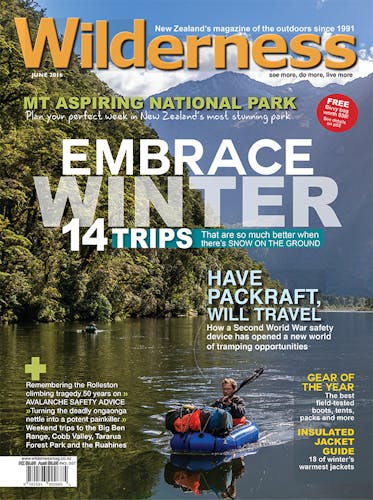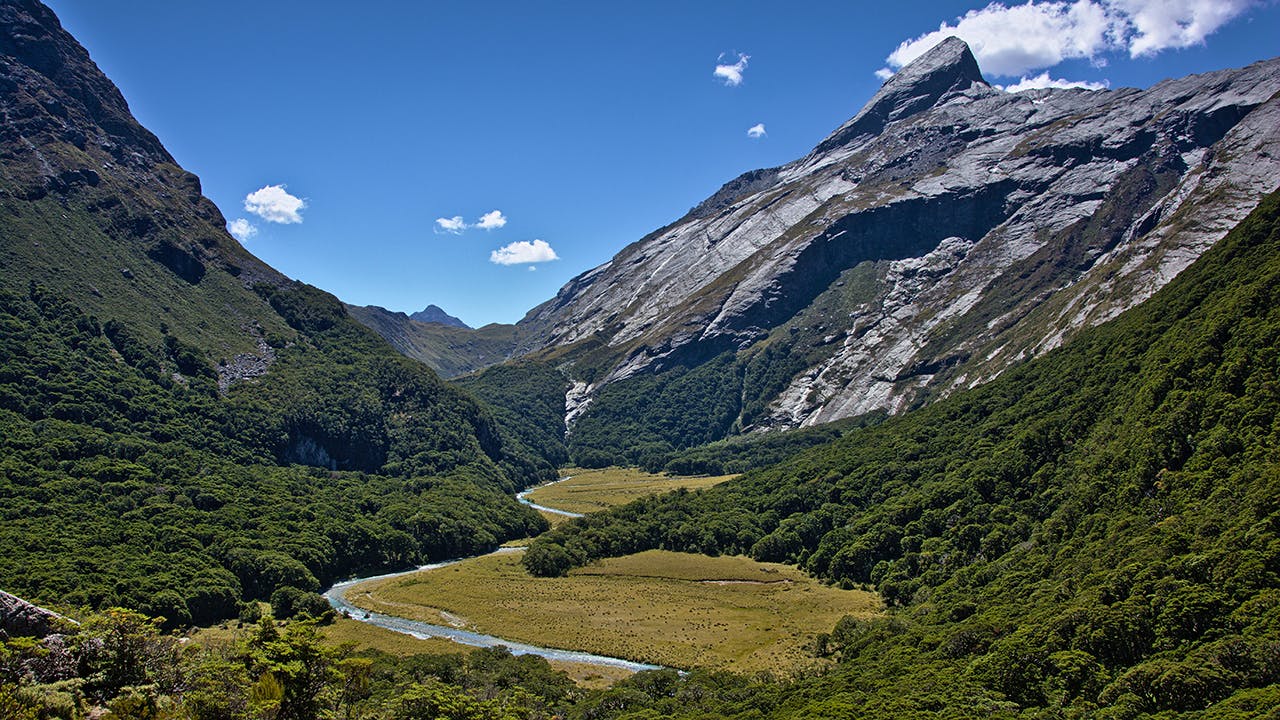Our most glamorous national park is home to the best tracks, huts and mountains
Mount Aspiring is New Zealand’s third largest national park and offers some of the best tracks and scenery the South Island has to offer. This is the reason there are so many well-known tramps which either partially or wholly lie within the 3555km2 limits of the park. The Routeburn is probably the most famous of them all, but there are many others that are equally dramatic, if not even more so: Young-Gillespie Pass, Rabbit Pass, Cascade Saddle to the Rees, the classic five passes tramp and of course the mighty West Matukituki with Mt Aspiring itself towering above the bush-clad valley.
There is something for everyone here, whether a multiday tramp to remote Lake Nerine high above the Rock Burn, a gentle valley stroll to the spacious Mt Aspiring Hut, or a scramble up rocky Mt Armstrong, high above the Haast Highway. Or perhaps the park’s namesake peak, 3000m Mt Aspiring, is the lure.
All tastes can be catered for in this most dramatic of national parks, where the challenge is to decide how to choose where to best spend your allotted time.
A week isn’t long in the mountains, and further trips will soon materialise once you’ve got a few of these under your belt.
Escape the crowds
Head up the Rock Burn by way of Sugarloaf Pass and camp at Theatre Flat surrounded by ranges of craggy peaks. There is a pleasant sheltered camp among a large stand of beech trees here, with the crystal clear river close at hand. Spend a day exploring up the valley, looking for blue ducks that inhabit the fast-flowing river, or try a spot of fishing before rounding off the day with a cool dip in the Rock Burn.
For the energetic, the wild and remote Lake Nerine lies in a high basin a full day’s travel above Theatre Flat. It’s reached via Park Pass.
Make it a round trip, of sorts, by returning down to the Dart River Flats, over to Lake Sylvan and back to the Routeburn car park.
Climb a snowy peak
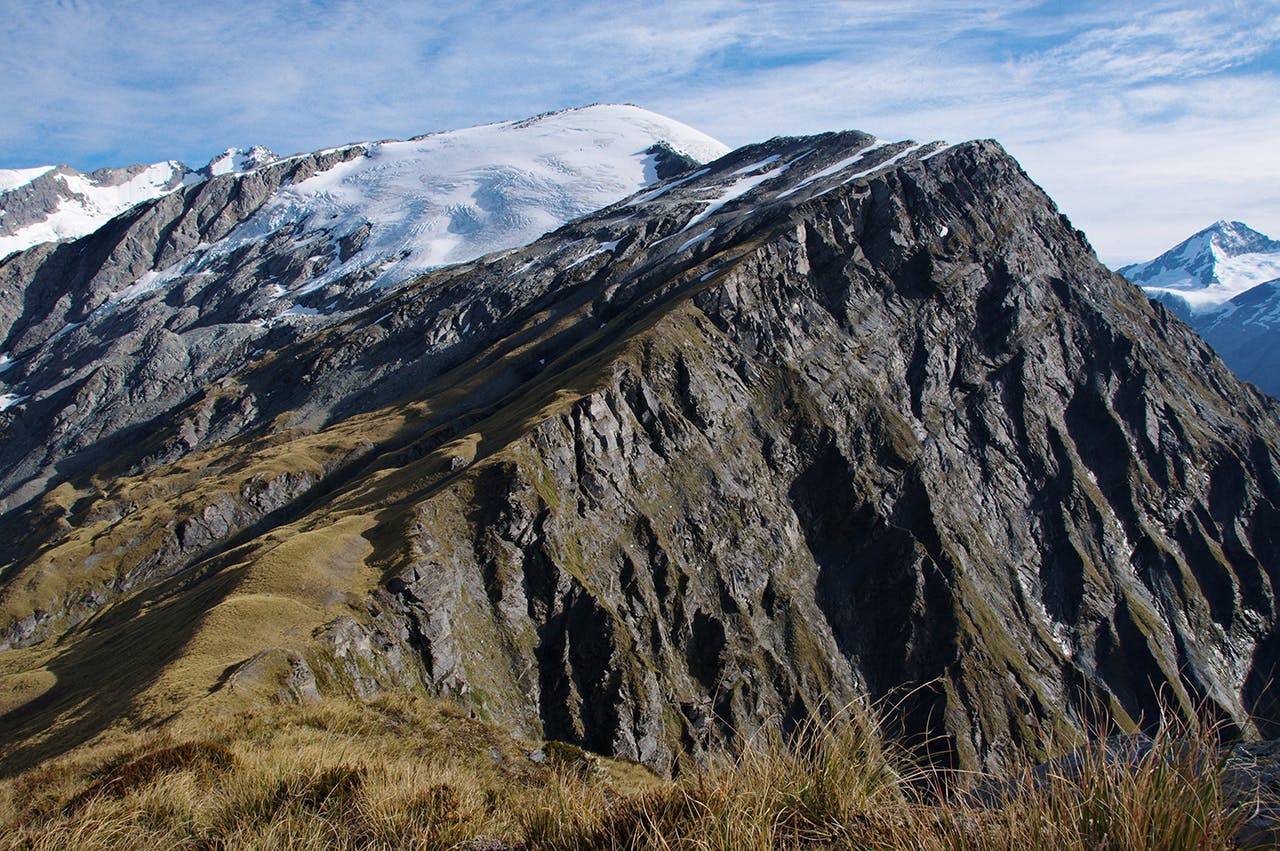
Cascade Saddle, lower left, and the snow-covered Plunket Dome – an acheiveable objective for those with basic alpine skills. Photo: Tomas Sobek Photography
There are countless peaks within the park and although many of them require varying degrees of technical ability, there are some that can be reached with only basic alpine skills.
Plunket Dome lies just north of Cascade Saddle and presents a fairly easy snow and ice climb with only a few, usually obvious, crevasses to circumnavigate on the way to its 2191m summit.
Camp by one of the small tarns that dot the broad tussock saddle and admire the outstanding views across the Matukituki Valley to Mt Aspiring and neighbouring peaks. With the right gear and some knowledge of mountaineering, you can reach an actual summit with even more extensive panoramas. From Plunket Dome, you can gaze into the upper névés and surrounding peaks of the Dart Glacier, across the Matukituki to the tumbling icefall of the Bonar Glacier below Mt Aspiring, or back down the deep, glacially-shaped valley which curves back to Lake Wanaka.
Explore an alpine rock garden
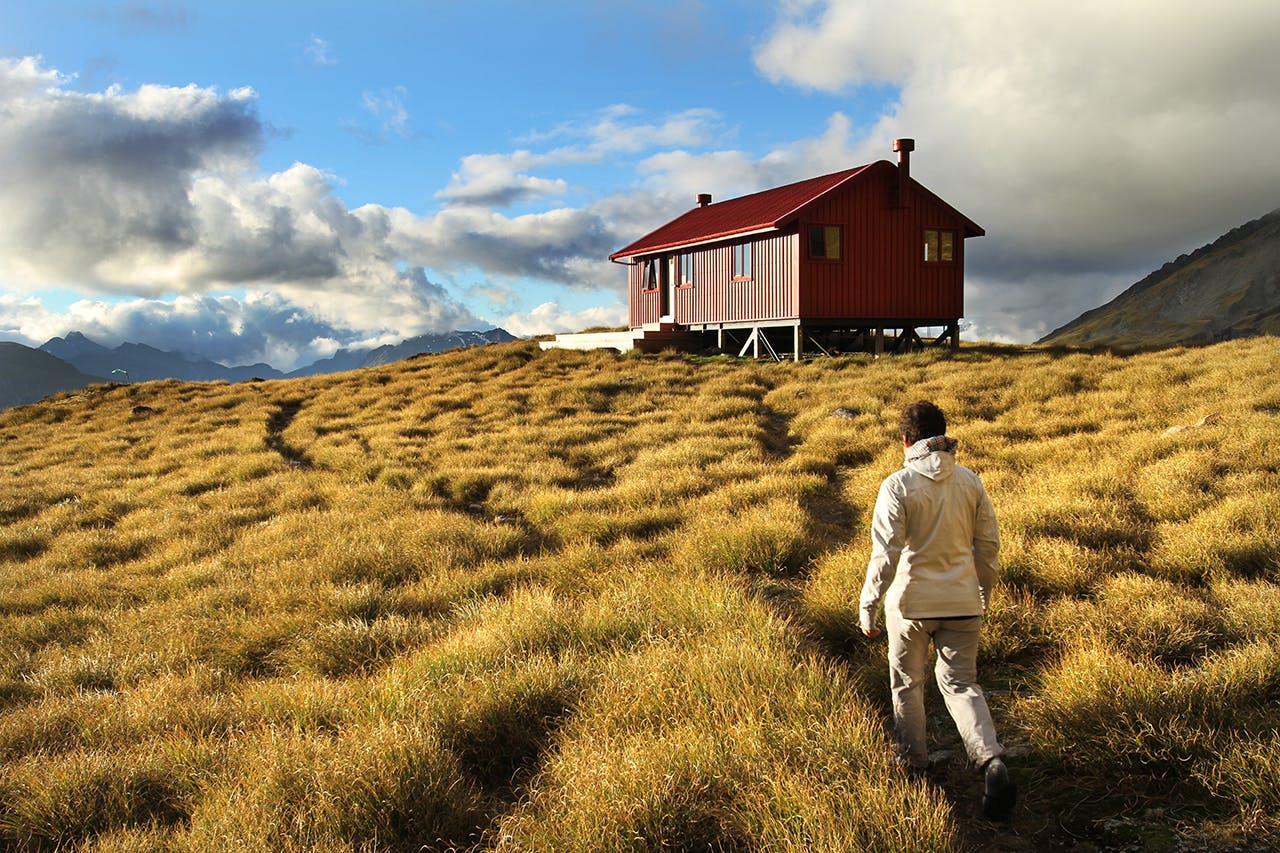
Approaching Brewster Hut, a base for exploring alpine rock gardens beneath Mt Armstrong. Photo: Stephanie Cotteret
Getting to Brewster Hut from Fantail Falls on the Haast Highway is certainly a good workout, but the landscape around and above this hut is just reward for the almost 1000m grunt from the road.
Above the hut is the ‘trampers peak’ of Mt Armstrong, which provides a pleasant scramble on its upper reaches. In late summer, the rocky outcrops below the 2174m summit are adorned with an array of alpine flowers, prominent among them are lush clumps of gentians. These creamy white harbingers of colder weather to come cling resiliently to the bare schist slabs where small tarns nestle. A better lunch spot would be hard to find, with nearby views to the glaciated Mt Brewster and distant vistas to Mt Aspiring, Mt Earnslaw and even Aoraki/Mt Cook to the north.
It’s possible to drop from the ridge leading south to Mt Kaye into the upper reaches of the Makarora River and thereby make a round-trip back to the Haast Highway. This route requires good navigation and alpine skills as it sidles snowfields below the ridge.
Sleep beneath rock bivouac
Bivouac rocks of varying degrees of luxury are dotted around most mountain areas. These days though, with lightweight tents readily available, they are falling out of favour with all but true backcountry diehards.
One such spacious rock is situated just below Park Pass at the headwaters of the Rock Burn. Another rock bivvy worth a visit is located in the East Branch of the Matukituki River, on the way to Rabbit Pass.
The Rock of Ages Bivouac remains fairly dry in all but the worst weather, and is tucked away up the Kitchener River which drains a large glacial basin to the east of the Mt Aspiring massif.
Kitchener Cirque is a dramatic place to visit, especially when the Turnbull Thomson Falls are in full spate. During periods of heavy rain, the precipitous cliffs that embrace this narrow valley become alive with silvery waterfalls plunging from every conceivable source. The Rock of Ages then becomes a real shelter from the storm.
Visit alpine lakes
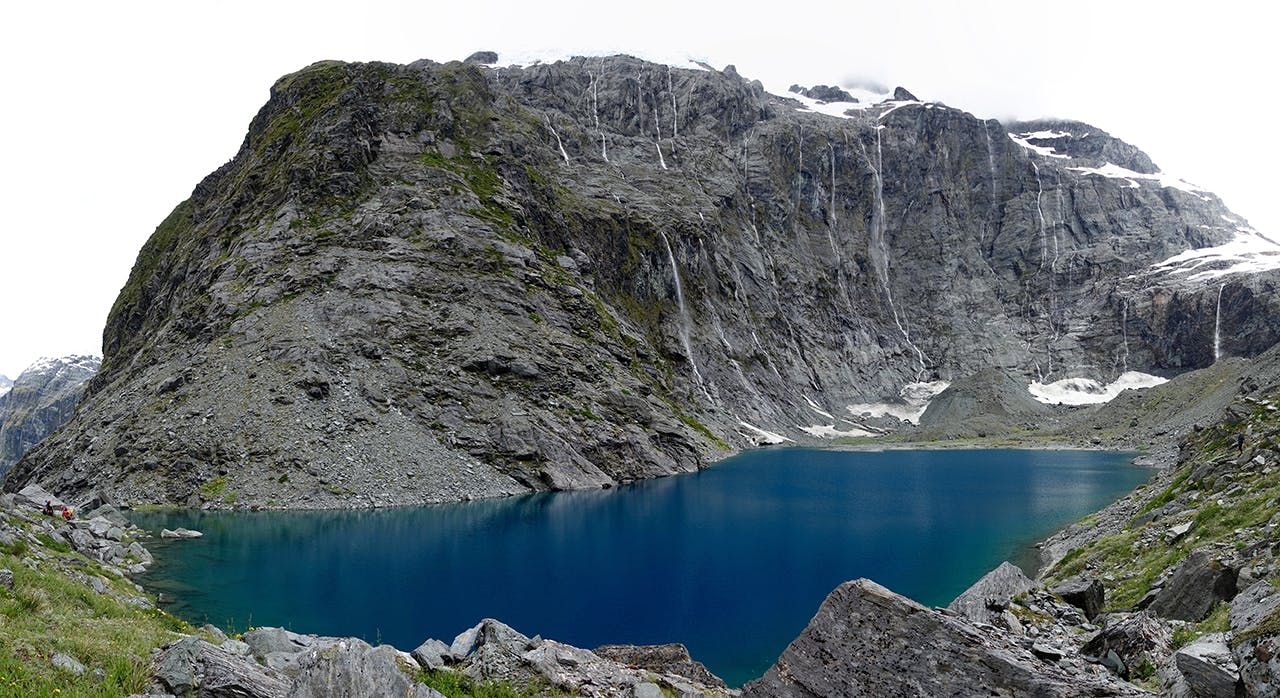
The glacier-fed Lake Castalia. Photo: Hamish Cumming
A glance of the map will assure you there is no shortage of water, in its various forms, covering the Mt Aspiring landscape. Glaciers become rivers and streams, which in turn flow into bodies of water ranging from large lakes to small tarns.
Lakes with names like Crucible, Lucidus and Castalia have a certain ring to them and make fine destinations, especially if you’re prepared to pay for a jet boat ride to save long valley walk-ins.
There is a jet boat operation out of Makarora which takes passengers up the Wilkin River to Kerin Forks, thereby saving a day along the lower reaches of this long valley. To reach Lucidus and Castalia, continue up the Wilkin to Top Forks Hut, sited on grassy flats below the impressive Mt Pollux.
The narrow and very scenic Wilkin River North Branch leads to Lakes Lucidus and Castalia, tucked beneath hanging glaciers and towering bluffs. They are a worthy day trip from the hut below.
Sleep in a quiet hut
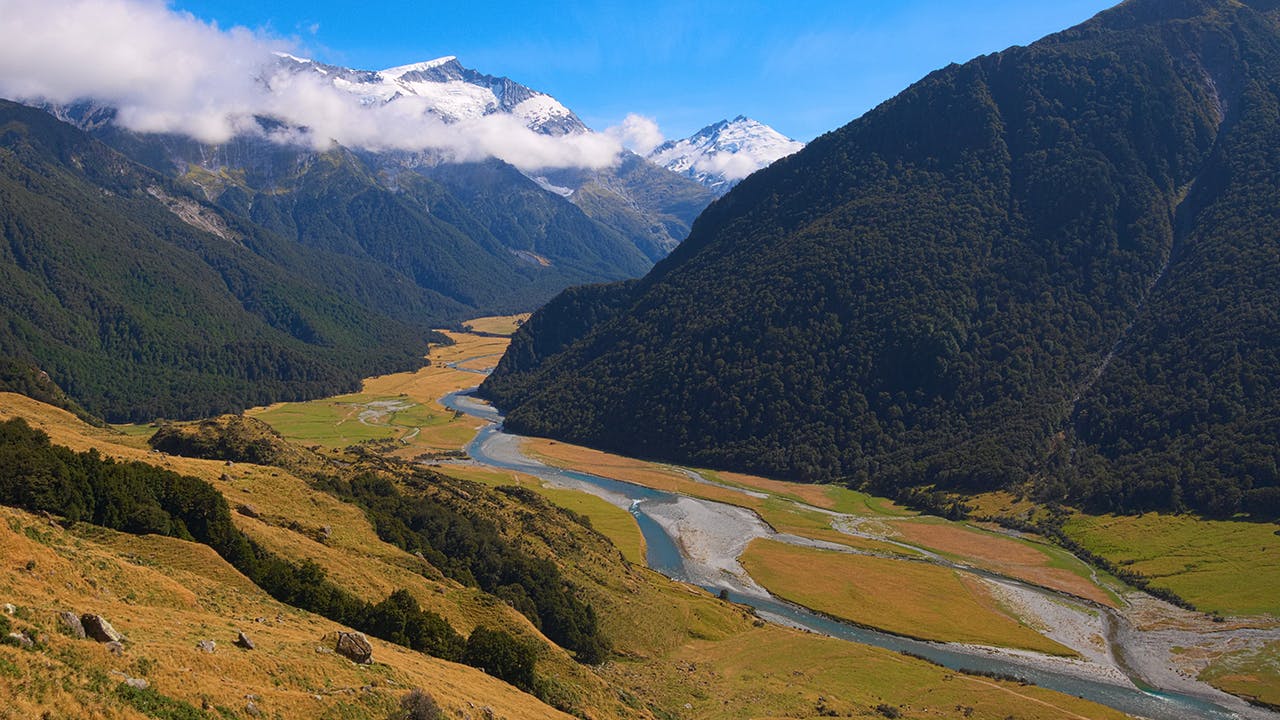
Hike the magnificent west branch of the Mtukituki Valley to the solitude of Liverpool Hut. Photo: Tomas Sobek Photography
‘Quiet’ is a relative term during the busy summer months in this popular park and, apart from a few out-of-the-way spots (Makarora, Camerons and Wills valley huts spring to mind), it is always a bit of a gamble if you’re searching for a hut offering mountain solitude.
The 10-bunk Liverpool Hut is a possible out-of-season destination. It is perched high above the West Branch of the Matukituki and can be reached in a day from the fleshpots of Wanaka.
From the front door, the glacial peaks of Rob Roy and Mt Avalanche fill the eastern horizon. A short walk away fine views to Mt Aspiring and its chaotic icefalls are on offer.
The never-ending list
A more thorough study of the map will reveal an almost endless array of possible goals. The list gets no smaller, and over the years, articles in Wilderness have whetted my appetite for pastures new.
The Earnslaw Burn looks a great spot and Lake Unknown has a certain ring to it. Then of course there is that sizeable chunk of magnificent wilderness north-west of the Barrier Range, culminating in the Olivine Ice Plateau. This is the Holy Grail of destinations in this part of the world, but you’d need more than a week to see it all.





